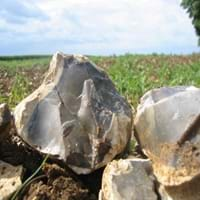Properties of Flint
Heat Resistant, Impact Resistant, Pressure Resistant, Wear Resistant 0
Physical Properties of Flint
Physical properties of rocks are used to identify the type of rocks and to discover more about them. There are various physical properties of Flint like Hardness, Grain Size, Fracture, Streak, Porosity, Luster, Strength etc which defines it. The physical properties of Flint rock are vital in determining its Flint Texture and Flint Uses.
Hardness and Strength of Flint
The physical properties of Flint depend on its formation. Physical properties of rocks play an important role in determining its applications in various fields. Rocks are rated on the on the Moh's Hardness Scale which rates the rocks on the scale from 1 to 10. Rocks with hardness 1-3 are soft rocks from 3-6 are medium hardness rocks and 6-10 are hard rocks. The hardness of Flint is 7 whereas its compressive strength is 450.00 N/mm2. Streak is the color of rock when it is crushed or powdered. The streak of Flint is white whereas its fracture is conchoidal. Luster of Flint is the interaction of light with the surface of Flint. Luster of Flint is vitreous. Flint cleavage is non-existent. The specific gravity of Flint is 2.5-2.8. Flint is translucent to opaque in nature whereas its toughness is 1.5. You can also know all the list of rocks in Opaque Rocks, Translucent Rocks and Transparent Rocks.









